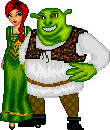Television:
Theorist:
♥ Gunter (1995) 1950-1970s showed 25-30% of women on TV
Point:
Women are stereotyped
Evidence:
Hollyoaks:
♥ Carmel-“bimbo”
♥ Jacqui “Ladette”

♥ Michaela “troublemaker”

Explanation (reason why):
♥ Stereotypes are a short hand as producers of the show do not have enough time to go into too much detail for each character.
♥ Helps audience identify with the character
Point:
♥ Women are not stereotyped
Evidence, explanation and theorist:

FRIENDS: Monica subverts stereotypes of a typical woman as she is assertive and dominant over chandler. However, in a way she is stereotyped is by her confirming to the typical “housewife” role by her excessively cleaning; but then again this exgeration of her cleaning obessession can be constructed to create humour for the audience. This demonstrates how sitcoms have progressed since the 1970s as Miles reseach states how sitcoms of the era showed equal number of men and women in them but the women representations were sexist.
Film
Humm (1997):
Fatal attraction (1987)
Women are “bad hysterical careerists”
Point:
♥ women take on generic roles
Evidence:
♥ Femme fatale- film noir

Film
Humm (1997):
Fatal attraction (1987)
Women are “bad hysterical careerists”
Point:
♥ women take on generic roles
Evidence:
♥ Femme fatale- film noir

Jane Greer a film actress best known for her role as femme fatale Kathie Moffat in Out of the Past (1947).

♥ Daphne in the animated series Scooby Doo plays the role of the Damsel in distress as she is the one female in the group who is most likely to get kidnapped, tied up, and left helpless this role is really typical in action movies to.

♥ Madonna vs. whore/vamp- Bollywood films (binary opposition)
Mere Jeevan Saathi (2006):
Anjali takes on the role of the Madonna represented as pure and innocent
Natasha takes plays the role of the vamp by taking on the role of the whore this is illustrated as she sleeps with Anjali’s boyfriend and in the end is punished by her commit suicide

♥ Final girl in slasher films
Typical had masculine qualities this is noticeable to the audience through their costume, short hair or them not having boyfriend.
Explanation (reason why)
♥ Audiences have expectations that needs to be fulfilled
♥ Audience find it easier to identify with these characters
♥ Audiences don’t like change
Adverts
Theorist:
Laura Mulvey (1975, Visual pleasures and narrative cinema)
Point:
Women are castrated
Evidence and Explanation (reason why):
Women are presented with phallic object or fetishised – substitute for a man and to take away the male spectators anxiety

Music
Point:
Women are shown to be powerful, independent and autonomous but are still objects of the “male gaze”.
Evidence:
Pussycat dolls
Christina Aguilera
Spice girls

Explanation (reason why)
It could be argued they are not objectifying themselves but doing this to make themselves look good and feel proud of themselves as they have the power to tease a man.
Magazines
Point: women are allowed to get the same pleasure as men from sex
Evidence





No comments:
Post a Comment